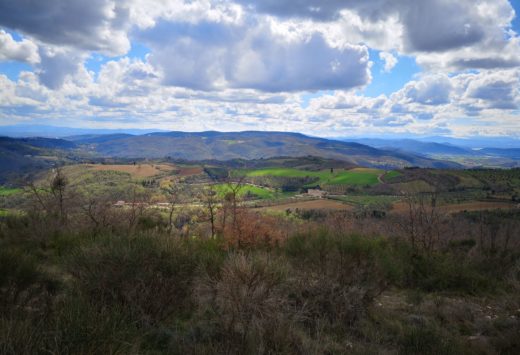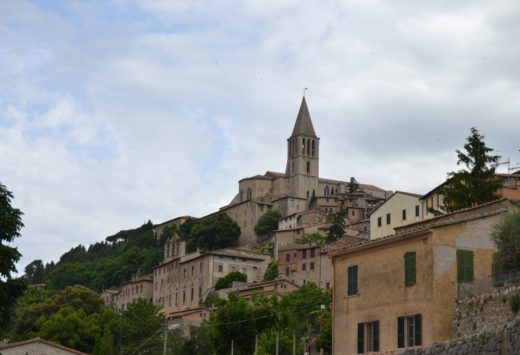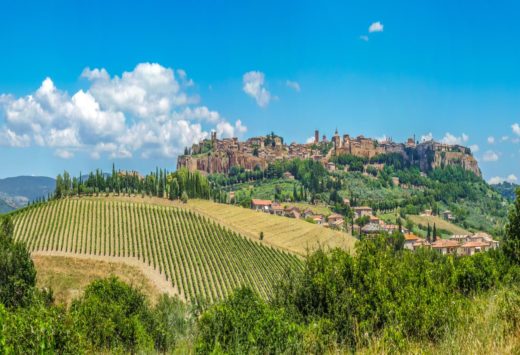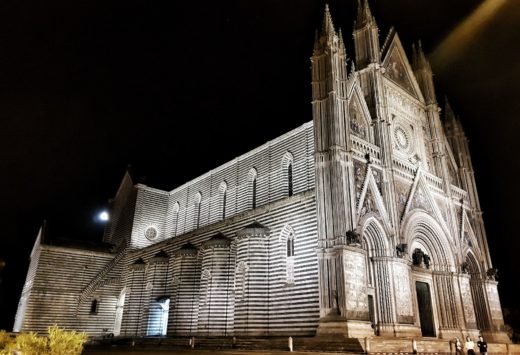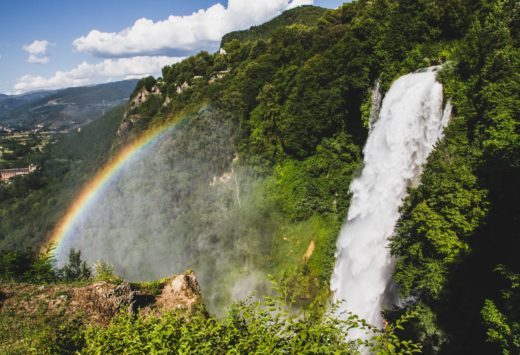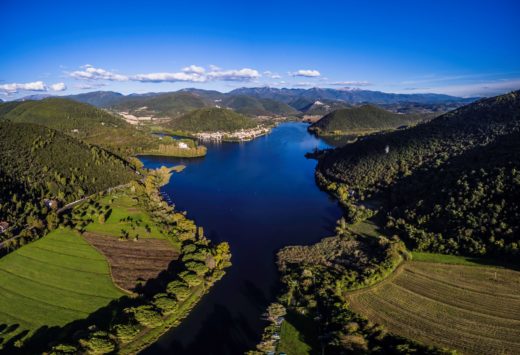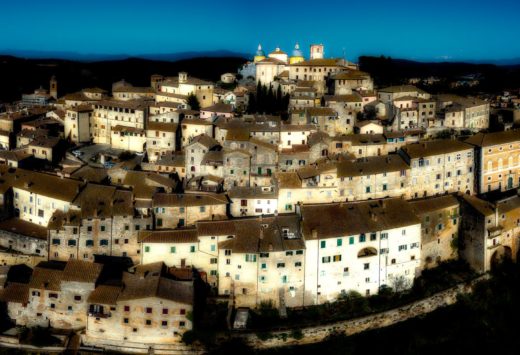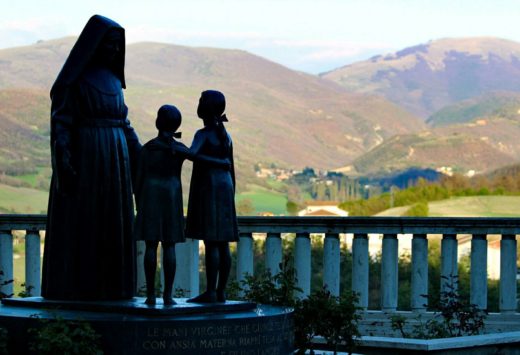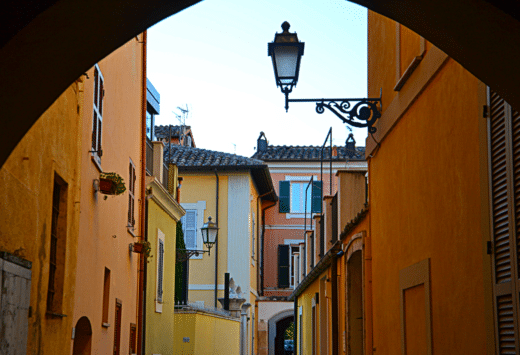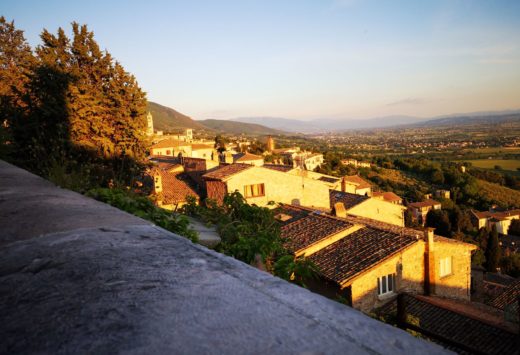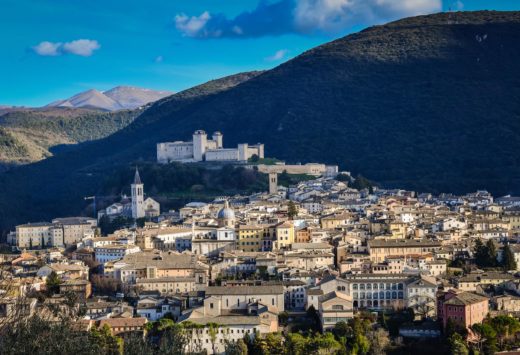THE PRE-ROMAN PERIOD
The large necropolis discovered at the end of the 1800s during construction of the Terni steel factory proved that this valley below the Martani mountains was densely inhabited already during the iron and bronze ages. The ancient burial ground is enormous- almost three kilometers long – and is connected to the S. Pietro in Campo necropolis (6th century), where St Peter the Warrior’s tomb is located.
As in other parts of the region, Terni was an outpost of the early Umbrian population even before the Romans arrived between the 6th and 3rd centuries BC. The Interamnia Nahars settlement around 672 BC, where the town of Terni now stands, seems to have been one of the largest and best structured. The local river that flows through Terni and surrounding area took its name Nera from this settlement. The people were part of the Naharki, a population of shepherds and warriors with their own particular identity and which filled the vast burial ground in this territory.
ROMAN TIMES
The first Umbrian towns to be conquered and come under Roman influence were those along the Flaminian Way, one of the main communication arteries that led into central Italy and connected Rome to the Adriatic Sea. It passed through the very center of Terni and was part of the Cardo Maximus, intersecting with the Decumanus Maximus at the spot of what is today Terni’s Piazza della Repubblica. The Interamnia Nahars settlement was one of the first to succumb, called a Statio until 90 BC, when the law Lex Julia granted Roman citizenship to all the Italic populations and the village became a municipium. There are still traces of the presence of the Romans in Terni in the ruins of the old city wall, the amphitheater Fausto and in the San Salvatore church, built over an ancient domus (dwelling). A column, possibly part of a temple dedicated to river gods, was found near the Mulino Secci mill on the Nera River. For fear the people would cause a revolt, the bishop Valentino da Terni was beheaded on 14 Feb 273 outside the city walls along the Flaminian Way. Ordered by the emperor Aureliano, the bishop was killed because he officiated at the marriage of a Christian girl Serapia and a pagan legionary Sabino. The girl’s disease and their uncontrollable love convinced Valentino to marry them. The lovers both died, united for eternity as they had hoped, just when they received the bishop’s blessing. Shortly thereafter the bishop lost his life and since then he has protected and watched over lovers around the world. J
THE MIDDLE AGES AND THE TOWNSHIP TIMES
After the fall of the Roman Empire, Terni faced the same fate as all the other territories in central Italy: first they were invaded by the Goths – suffering devastation at the hands of the armies of Totila and Narsete in the 6th century; then they were conquered by the Lombards who fought terrible wars against the Byzantines, who struggled constantly to create a corridor along the Amerina Way that connected Rome to the Esarcato in Ravenna, a Byzantine lordship in Italy. In this period many extraordinary fortresses and castles were built in the area and atop the local mountains. In 742 a meeting was held here that was fundamental to Italian history: Pope Zaccaria met with the Lombard king Liutprando, who had ransacked central Italy with his armies in an effort to restore order among his ducats. Liutprando returned to the Pope some strategic territories, who in turn lent his Roman armies – officially under the command of the momentary Byzantine emperor Artavasde, struggling for the throne in Constantinople – to get back the dukedom of Spoleto. After Liutprando had donated the Sutri Castle to Pope Gregory II, the meeting in Terni became the most important event that laid the foundations for the construction of the Church State, a political protagonist in Italian history up until the 19th century.
Still under papal influence, Terni became one of the most evolved towns. In the 9th century Pope Benedict III granted municipal autonomy, designing the first actual borders of the territory. First under Frederick Redbeard (Federico Barbarossa) and then under Frederick II, Terni passed under imperial rule where it remained off and on until the cardinal ‘colonel’ Albornoz brought the town back under papal rule in the mid-14th century.
St Francis was a frequent user of the Flaminian Way, and stayed in Terni on various occasions. There are traces of his presence in the S. Cristoforo Church (St Christopher), where tradition has it that he while was a guest of the parish priest he found the time to perform two miracles, and, of course, the Chiesa di S. Francesco (St Francis), built at the end of the 13th century in the exact place where he stayed after preaching in the town in 1218.
THE RENAISSANCE AND MODERN TIMES
The fact that Terni was so long under the papal state meant that private city lordships did not develop. With his Costitutiones Aegidianae, the strong influence of Cardinal Albornoz placed nobles and normal citizens pretty much on the same level so that none were seen to be better than the other. To this aim, the Spanish cardinal formed the corpo armato de Banderari (the Banderari armed militia) made up mostly of people from the middle class – artisans and merchants – whose job it was to defend city officials and magistrates, who were mainly from noble families – and which had a say in town council decisions. But the noble class gradually gained power and took privileges away from the Banderari, who organized a bloody revolt in 1564, breaking into the houses of the nobles with their primitive muskets and relentlessly killing anyone they found, including women and children. When Pope Pius IV realized how serious the situation was, he sent a representative to take over the administration of the city and try to arrest the guilty parties. His revenge was gruesome: the chopped-off heads of the Banderari and of many who had nothing to do with the revolt were set on view above the door of the governor’s palace for a whole year.
When the rich nobles rose to power they vented their pride and ambitiousness in shows of exaggerated luxury and mundanity to overshadow everyone else. During this period these nobles called to the town artists like Vignola, Fontana, Rainaldi, Karel van Mander and Antonio da Sangallo the Younger. Sangallo, who died a mysterious death in Terni, designed one of the most beautiful buildings in town, the Palazzo Spada, which belonged to this Ternese noble family until the end of the 18th century. Today it is the seat of city government offices and it is where the city council meets. There is evidence of the presence in town of Benozzo Gozzoli in the 1400s, and contemporarily Piermatteo d’Amelia painted his masterpiece for the St. Francis church, the alterpiece Pala dei Francescani (depicting Franciscan monks). You can see it today in the city’s Pinacoteca Comunale.
The external administration and the witch hunt that followed the Banderari revolt led to a long period of economic and social decline, worsened by cholera epidemics which were frequent over the next century. It was at this time that the cult of St Valentine evolved and spread. Pope Paul V ordered a search for the saint’s tomb and he was disinterred in 1605. To celebrate the finding of the saint’s body, work began on the restructuring and restoration of the old basilica that had been built over the tomb of the martyr in the 4th century.
THE NINETEEN HUNDREDS
«Al silenzio delle vostre campane succederà il rumore dei telai ed il fischio del vapore. Ai cadenti casolari sostituirà con la speculazione solidi ed ampi edifici; all’ozio mantenuto dei conventi succederà il lavoro, poiché quell’acqua che scende limpida e meravigliosa per le cime delle vostre montagne, feconderà la vostra industria»
(“The silence of your church bells will be followed by the noise of looms and the whistle of steam. The crumbling houses will be replaced by solid speculation and large buildings; the idleness maintained in convents will be followed by work, because the wonderful pure water that flows from your mountaintops will make industry fertile.”)
These words were spoken at the dawn of Italian unity to the people of Terni by Giocchino Napoleone Pepoli, the external commissioner for the Umbrian provinces, as if prophesizing the town’s future. Due to a combination of political situations and its geography, within thirty years Terni became one of the most important industrial hubs in Italy. This inspired the king’s government to found the Regia Fabbrica d’armi (weapons factory) in 1875, which you can visit today at the Museo delle Armi (small arms museum). The change that industry brought to the town was astounding: by the end of the 1800s, 11 thousand workers were employed in the steel plant, the foundries, chemical plants and other industries; the population doubled in ten years. Some of these large factories have been saved and converted to other uses. Besides the weapons museum, another example is the Papigno carbide and calcium cyanamide plant. This factory that began producing fertilizer for agricultural use in 1901 closed definitively in 1973. The old plant was restructured at the end of the 1900s; parts of it were used as a cinema set and many films were made here, including Roberto Begnini’s “Life is Beautiful.” The large warehouse of the Bosco mechanic shops, opened in 1890, have also been remodeled and today it is a conference and exhibition center.
For years all these industrial and factory works gave a different image to Terni, overshadowing the beautiful and interesting historical and artistic works within it. Because of its industrial importance, Terni was practically leveled to the ground in World War II by hundreds of bombardments by the allies. Its rebuilding has resulted in creating a new city able to transform its old, ugly eyesores into places of modern standards that preserve its vast artistic, historical and technological heritage.



